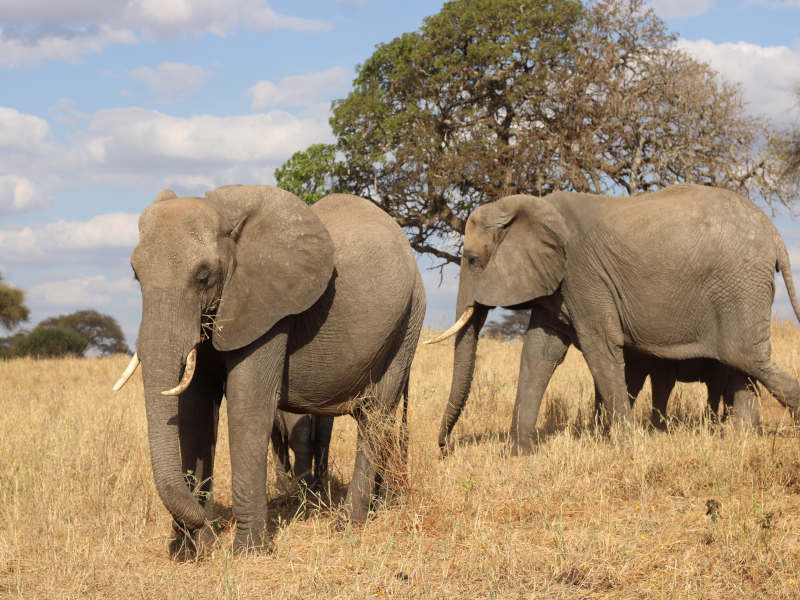
Embarking on an Epic Safari Adventure in Serengeti National Park: Your Ultimate Guide
Welcome to Serengeti National Park, a timeless wilderness where nature's drama unfolds against the backdrop of endless plains, rolling hills, and iconic acacia trees. Spanning over 14,750 square kilometers in Tanzania, Serengeti is synonymous with the quintessential African safari experience, offering unrivaled opportunities to witness the Great Migration, where millions of wildebeests, zebras, and gazelles traverse the vast landscape in search of greener pastures. Whether you're a wildlife enthusiast, nature lover, or adventure seeker, Serengeti promises an unforgettable journey into the heart of Africa's wilderness.
Best Time to Visit
Choosing the best time to visit Serengeti National Park is essential for witnessing the park's most spectacular events, such as the Great Migration and optimal wildlife viewing. The best time to visit varies depending on your interests:
Packing List and Weather
When preparing for your safari adventure in Serengeti National Park, it's crucial to pack accordingly for the climate and activities. Here's a suggested packing list:
The weather in Serengeti National Park varies throughout the year. During the dry season, temperatures range from 15°C to 25°C (59°F to 77°F), while the wet season brings occasional rain showers and slightly warmer temperatures.
Safety Tips
While Serengeti National Park offers a thrilling safari experience, it's essential to prioritize safety during your visit. Here are some safety tips to keep in mind:
Duration of Stay
The ideal duration for exploring Serengeti National Park depends on your interests and itinerary. While some visitors opt for a day trip to experience the highlights of the park, others choose to spend multiple days immersing themselves in its natural wonders. A minimum of three to four days allows for a more comprehensive exploration of the park's diverse ecosystems and wildlife.
Accommodation Types
Serengeti National Park offers a range of accommodation options to suit every traveler's preference and budget. From luxury lodges and tented camps to mobile camps and campsites, you'll find the perfect retreat after a day of adventure. Some popular accommodation choices include:
Activities in Serengeti
Serengeti National Park offers an array of activities to suit every traveler's interests. Whether you're embarking on a game drive in search of the Big Five, witnessing the Great Migration, or enjoying a hot air balloon safari over the savannah, there's no shortage of adventures to be had. Some popular activities include:
Popular Wildlife and Their Uniqueness
Serengeti National Park is renowned for its abundant wildlife, including some of Africa's most iconic species. Some of the most popular animals found in the park include:
Each species in Serengeti National Park has its own unique adaptations and survival strategies. From the lions' stealthy hunting tactics to the elephants' matriarchal society, every animal contributes to the park's rich biodiversity and ecological balance.
Lifespan and Survival Mode
The lifespan of animals in Serengeti National Park varies depending on factors such as species, habitat, and environmental conditions. Lions typically live between 10 to 14 years in the wild, while elephants can live up to 70 years or more. Wildebeests have a lifespan of around 20 years, while zebras can live up to 25 years in the wild.
Survival in Serengeti requires adaptation to the park's diverse ecosystems and the ability to navigate its challenges. From the savannah plains to the acacia woodlands and riverine habitats, animals must rely on their instincts and physical adaptations to thrive. Whether it's the lions' cooperative hunting strategies, the elephants' long-distance migrations, the wildebeests' vigilance against predators, or the zebras' agility and stamina, each species has evolved remarkable strategies for survival in their natural habitat.
Conclusion
Serengeti National Park epitomizes the raw beauty and untamed wilderness of Africa, offering an unparalleled safari experience that leaves a lasting impression on every visitor. Whether you're marveling at the sight of a lioness and her cubs, witnessing the breathtaking spectacle of the Great Migration, or simply soaking in the serenity of the savannah at sunset, Serengeti captivates with its natural wonders and rich biodiversity.
As you plan your safari adventure in Serengeti National Park, consider the best time to visit, pack accordingly for the climate and activities, and prioritize safety at all times. With a range of accommodation options to suit every preference, as well as a variety of activities to engage in, Serengeti promises an unforgettable journey into the heart of Africa's wilderness. So, pack your bags, set out on a safari adventure of a lifetime, and prepare to be awed by the majestic beauty of Serengeti National Park.